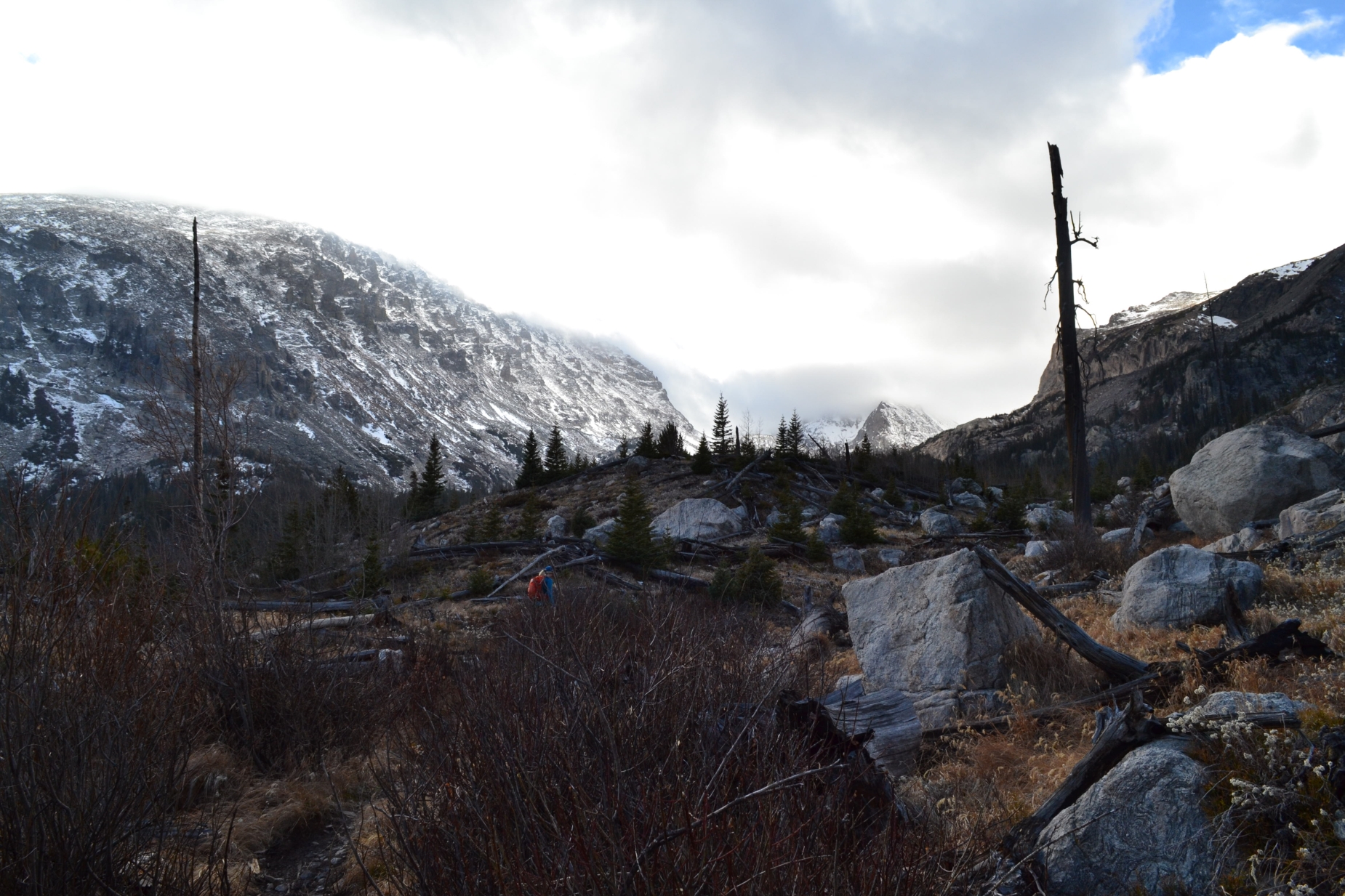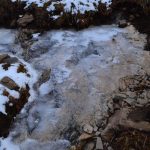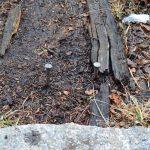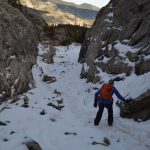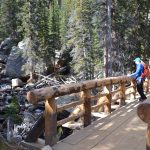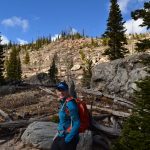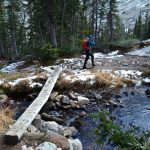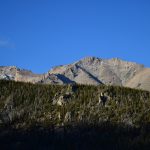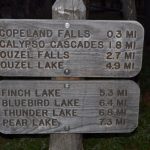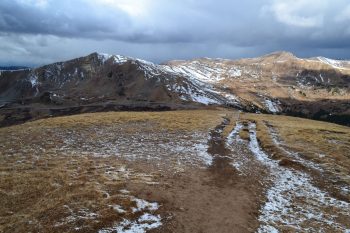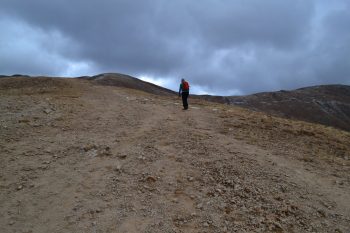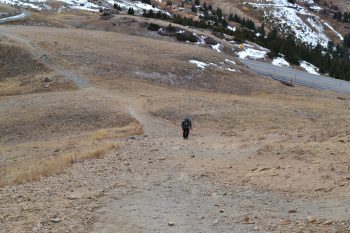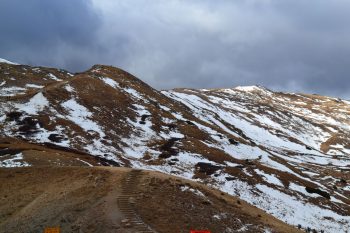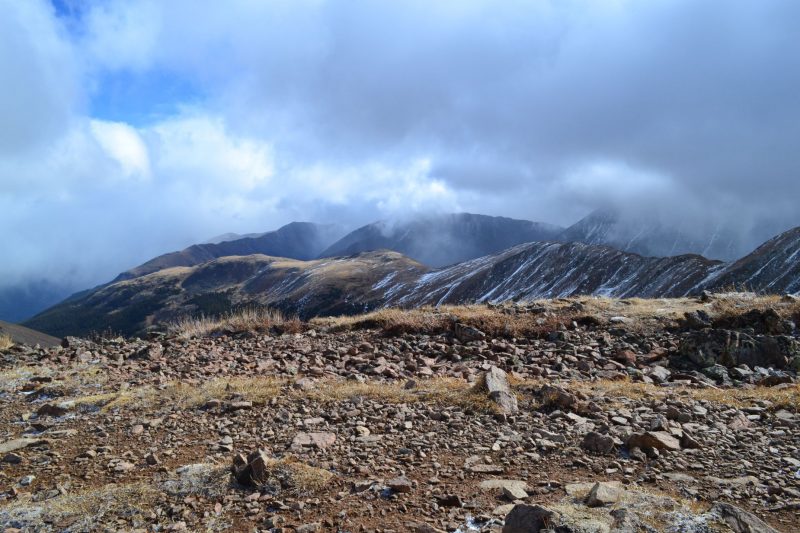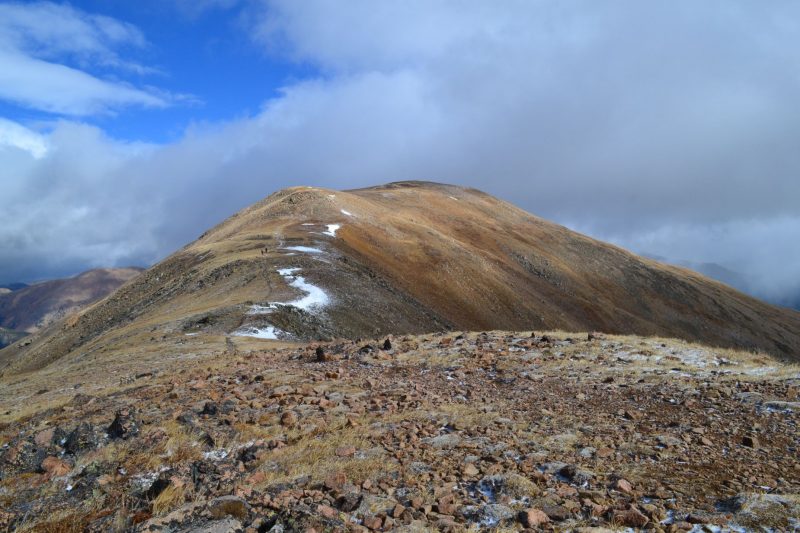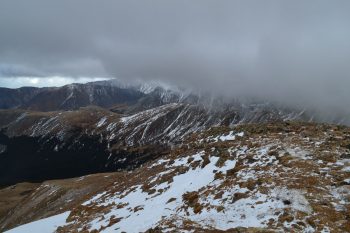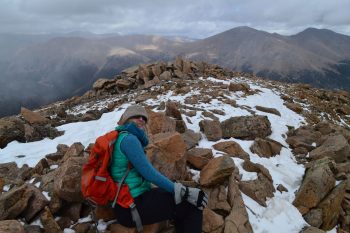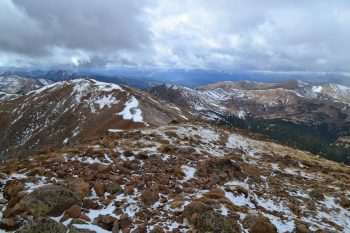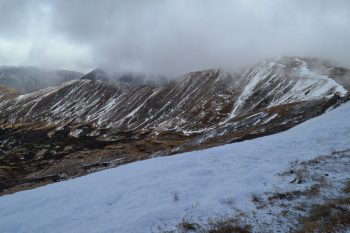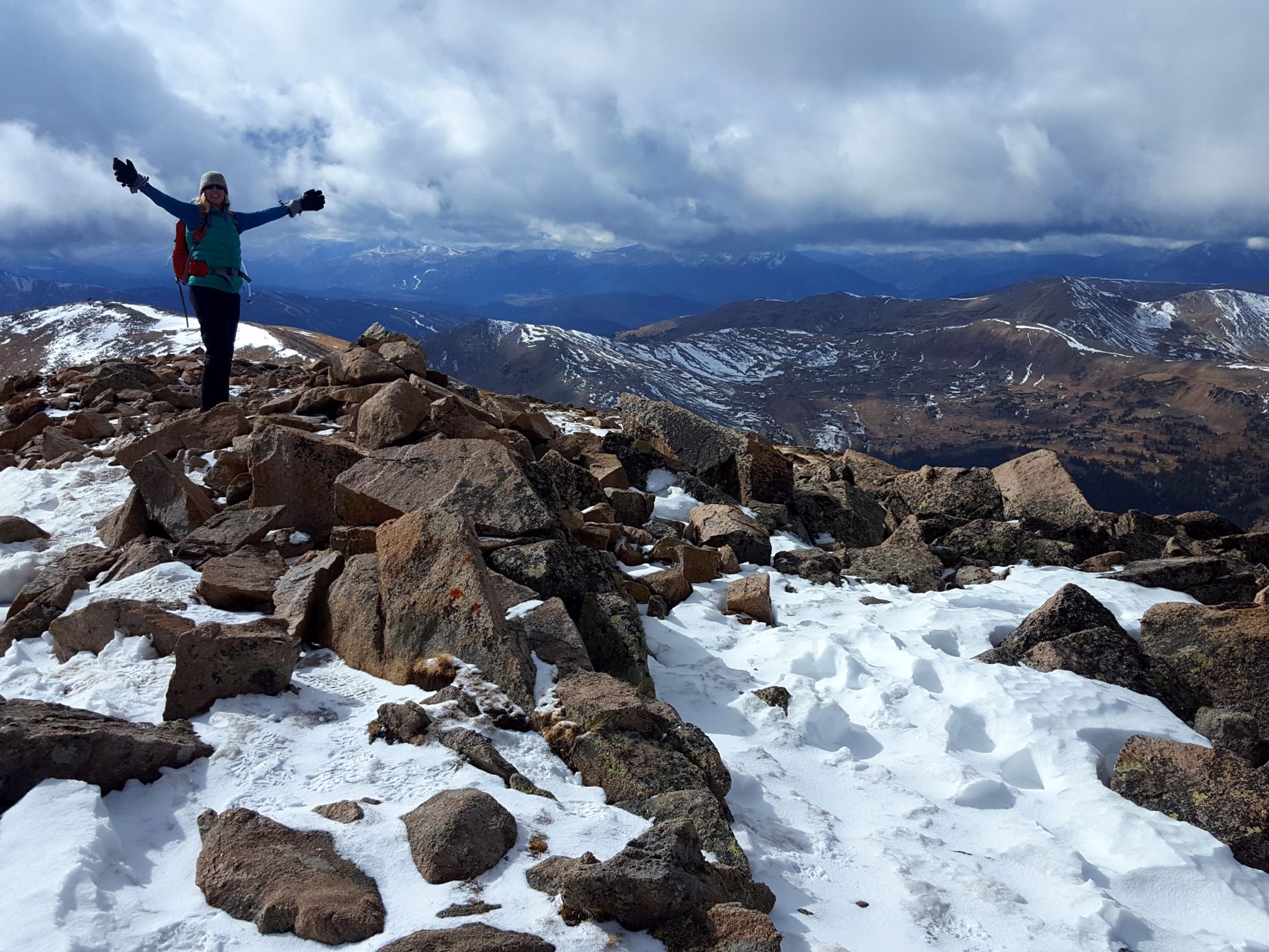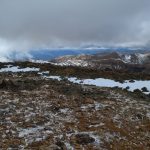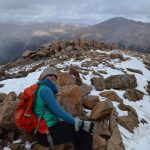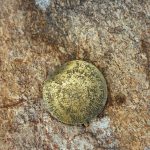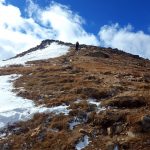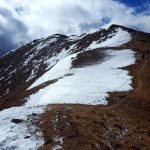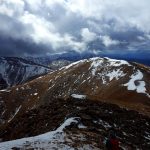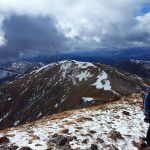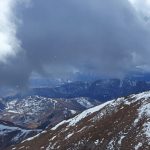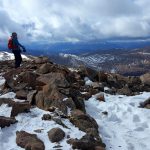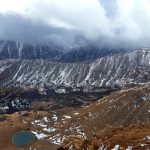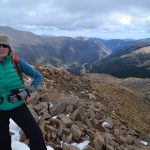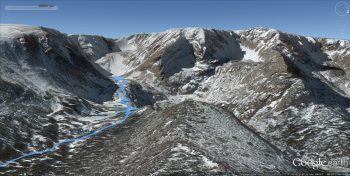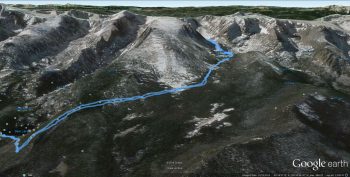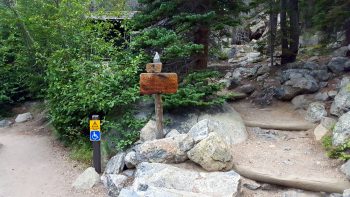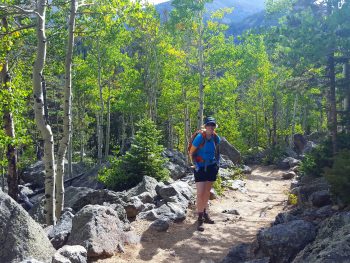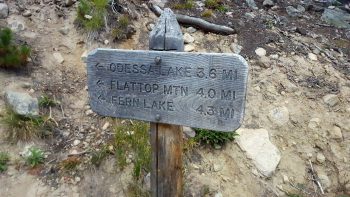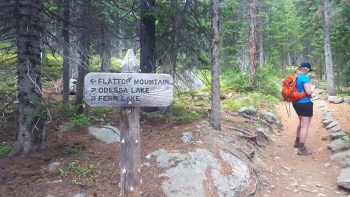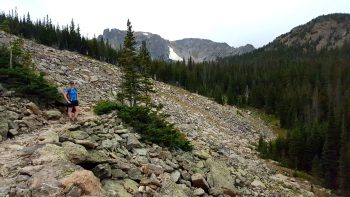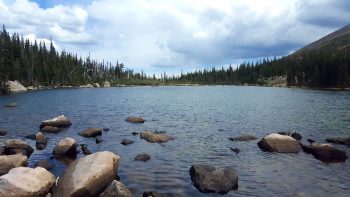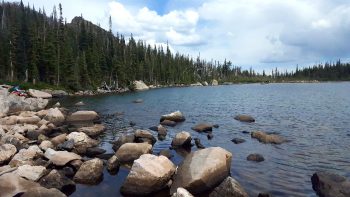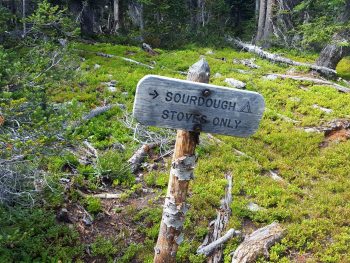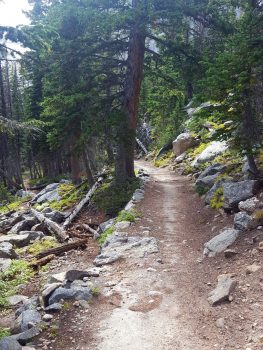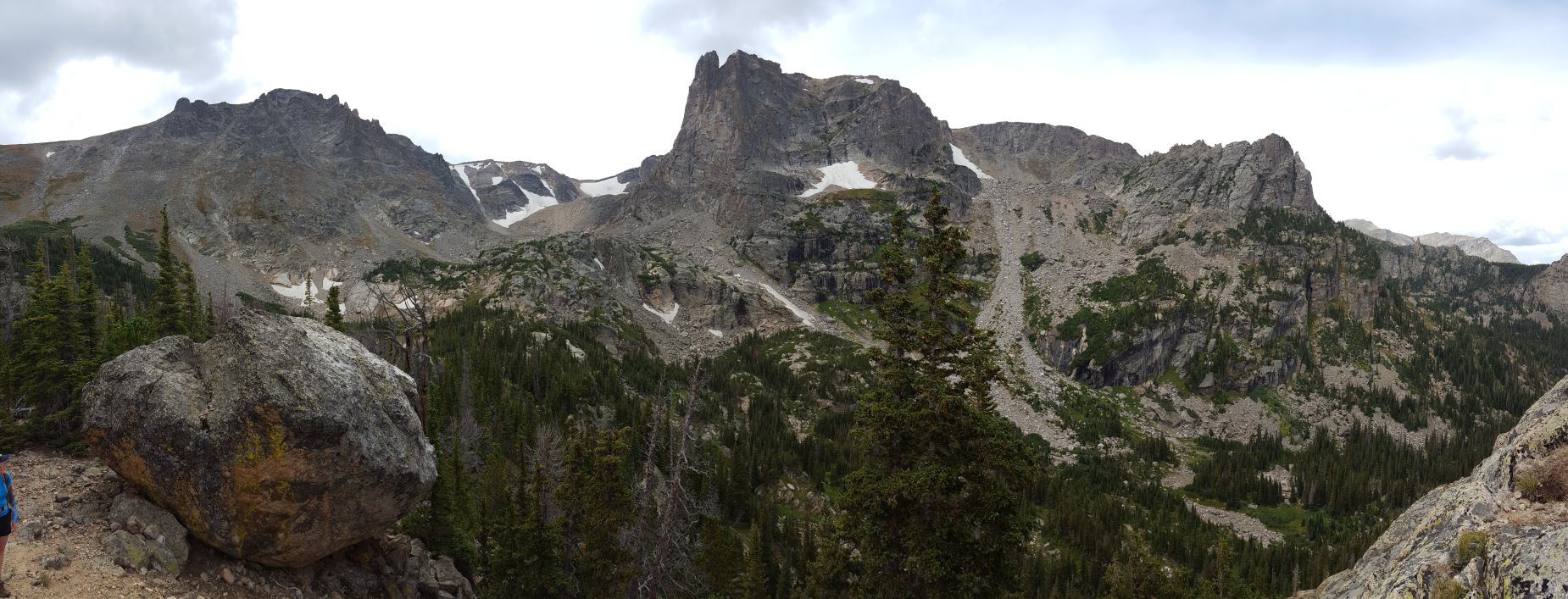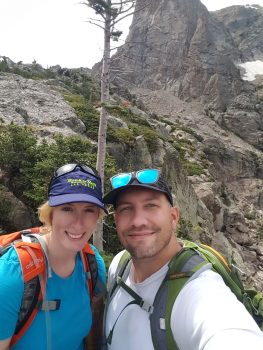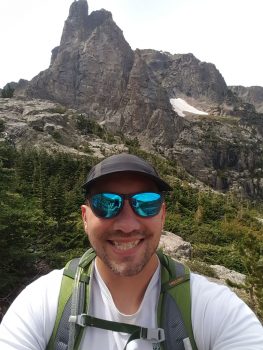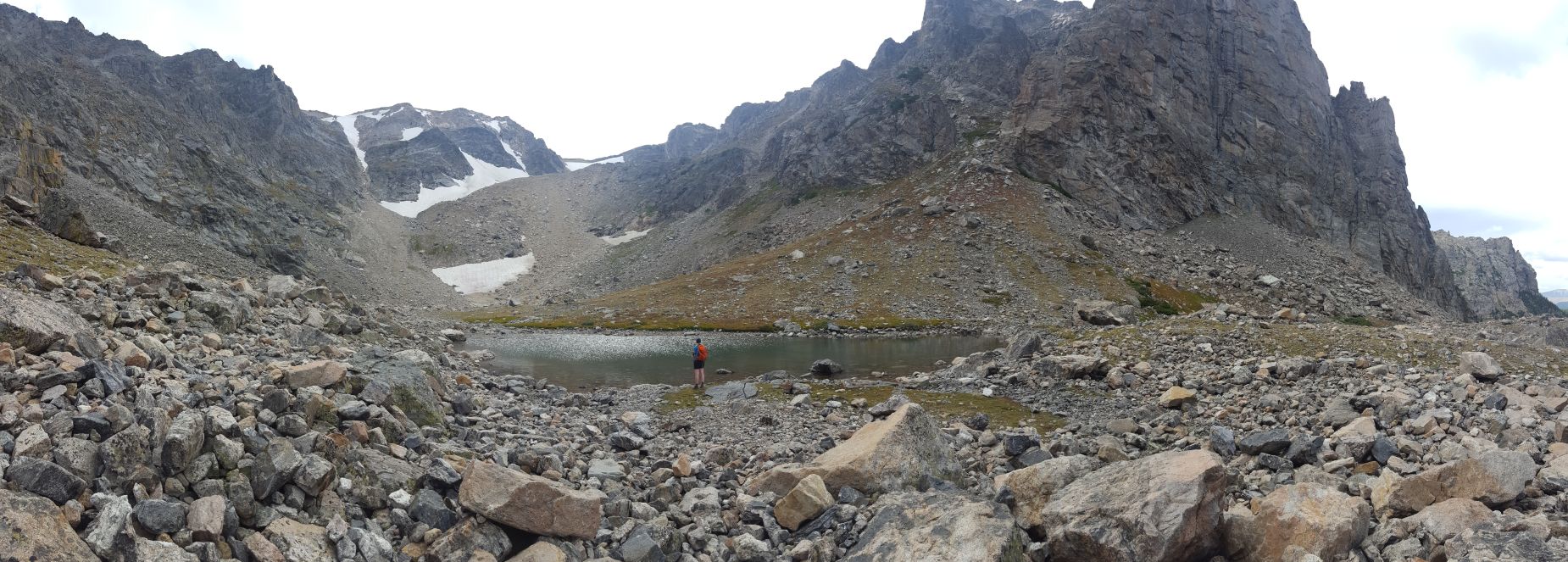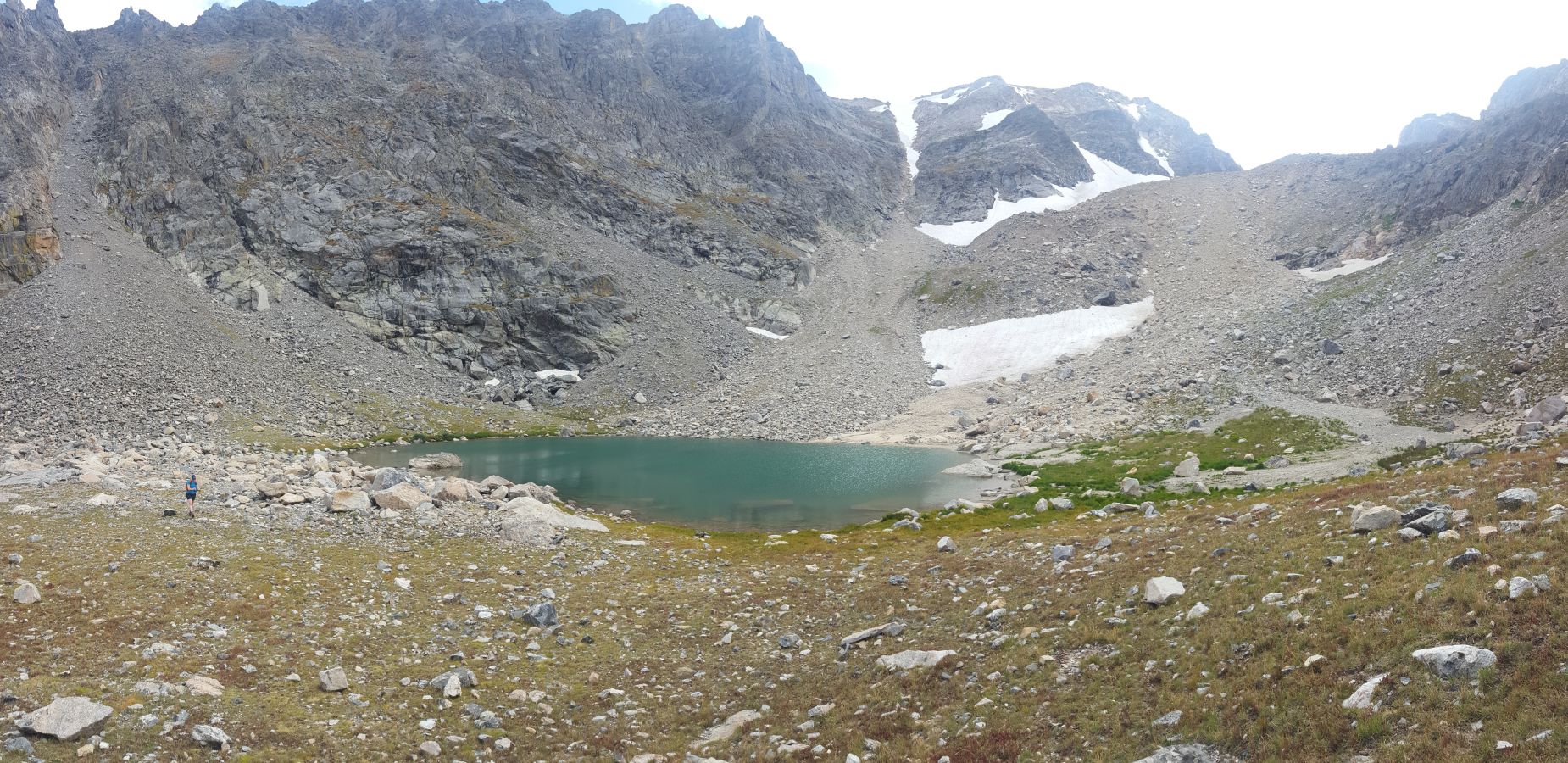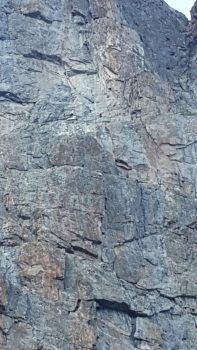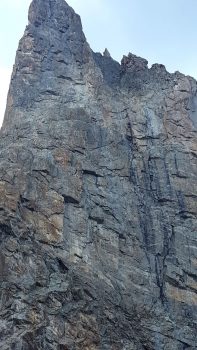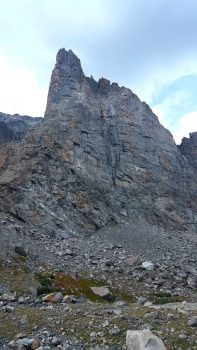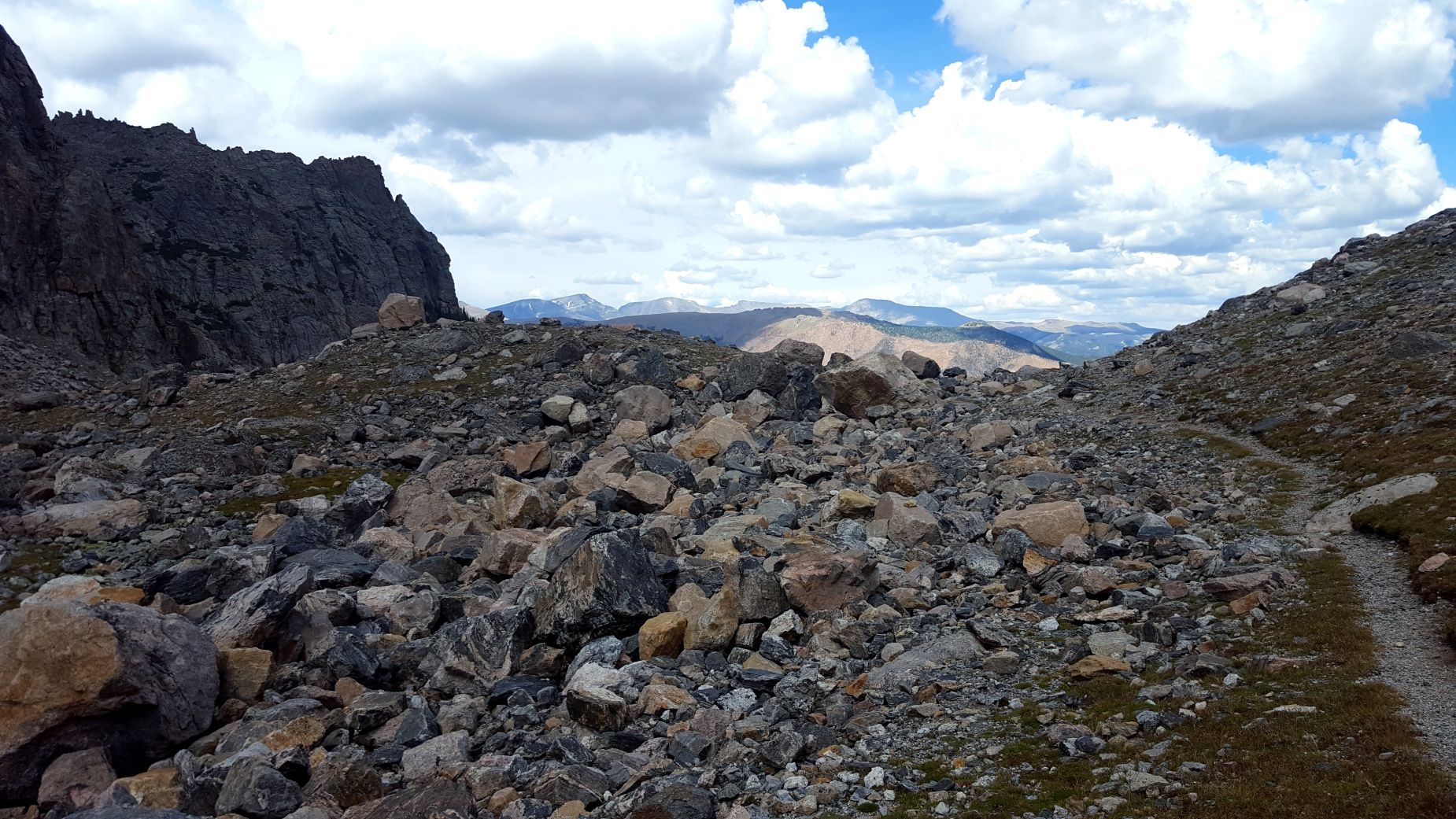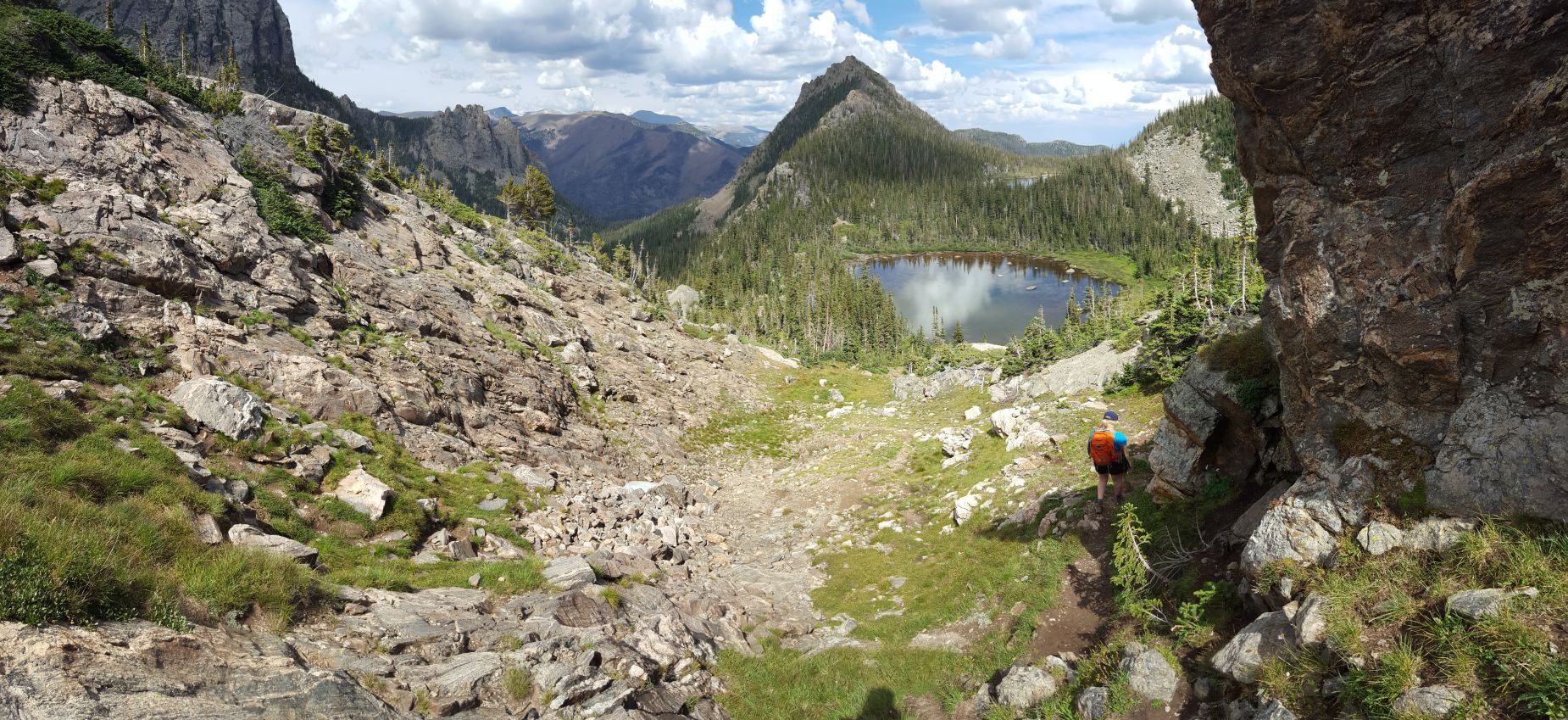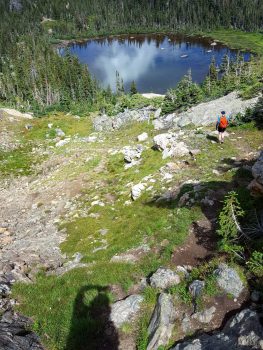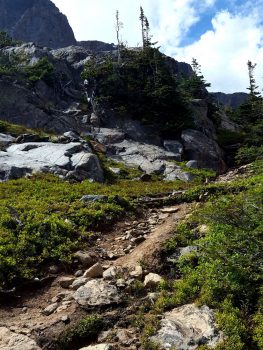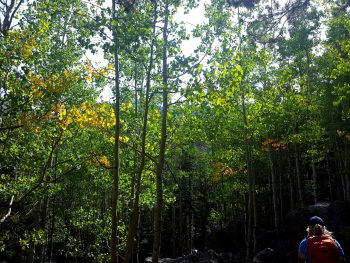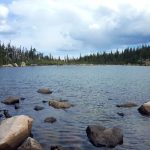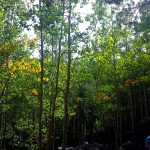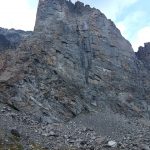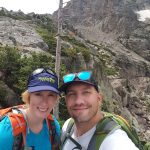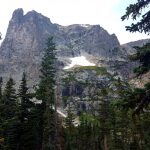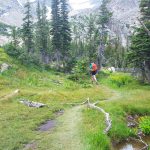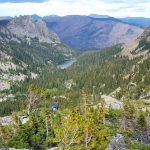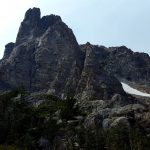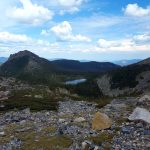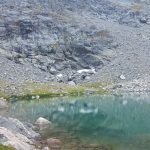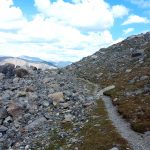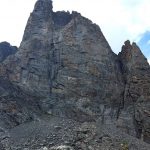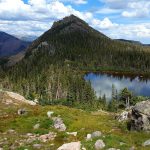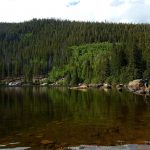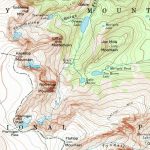Take a Walk
A Quest into the Wild
Lair o’ the Bear Park

It continues to be gorgeous weather here in the Front Range and so we decided to go hiking with Will and Moses in the Foothills on Saturday, November 12th. We had heard of a little park called Lair o’ the Bear Park near Morrison in Jefferson County and began to drive that way. The drive was scenic and short compared to most of our hikes; and we arrived at Lair o’ the Bear Park in the early afternoon. Parking was close to full, but there were spots left. We hopped out and began to explore the trailhead and our options.
The options at this park are numerous, and so we came back again on Friday, November 24th. As crazy as it seems, the trails were still relatively clear of snow even as we get close to December. Our first time out we walked on the Bear Creek Trail, which runs along Bear Creek, until we hit a bridge that led us to the Bruin Bluff Trail. The Bruin Bluff Trail loops around the park and gives some pleasant views from the hills to the south of the park. As we looped back around, we met back up with the Bear Creek Trail and followed the trail back to the parking lot. On our next adventure, we opted to visit a castle we had read about which is located about a mile out on the Bear Creek Trail. We hiked approximately one mile to Dunafon Castle and then kept going another half a mile to Corwina Park. This was an out-and-back. Both hikes were around 3 miles, and below are details and pictures from our adventures.
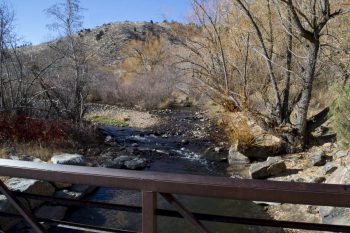
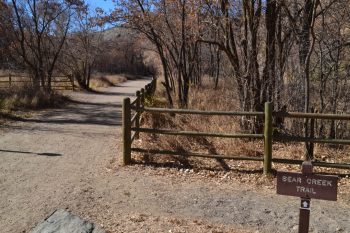

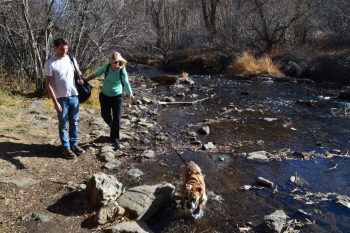
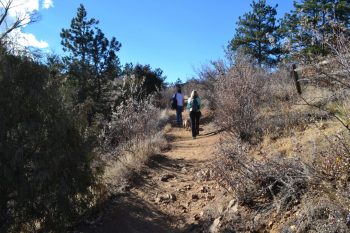
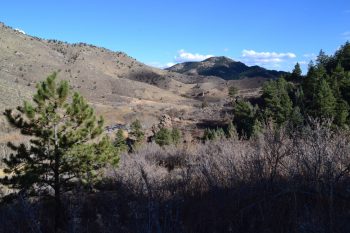
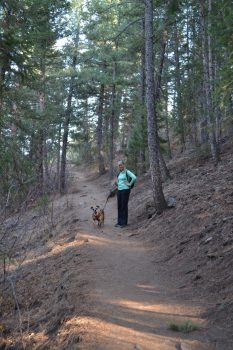
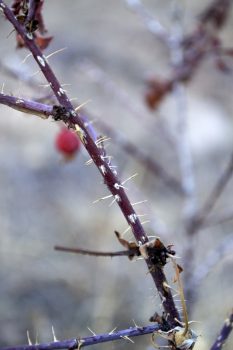

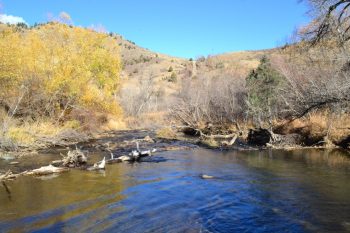

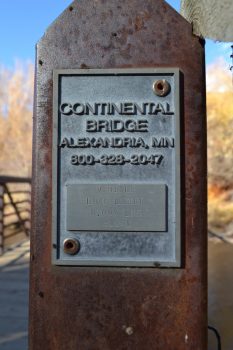

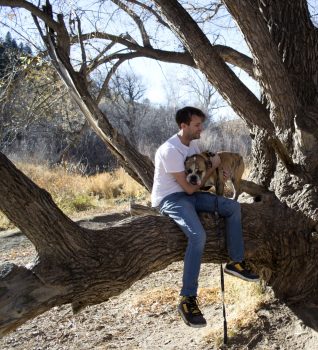
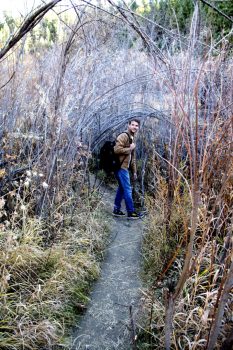 s wish with some help.
s wish with some help.
There are quite a few trails leading off from Bear Creek Trail, almost all of them go to the water. One very interesting trail we explored had an arch made of plants that led down to a beach. The Creekside Trail does run along the creek as well, and is a nice short diversion from the other trails. However, there are many other unnamed trails to explore. Just be careful, since erosion can be a problem and damaging the wildlife isn’t anyone’s goal.
Also, the park had a sign that mentioned a problem with New Zealand Mud Snails. The sign warned anglers on how to sanitize their boots and clothing if they go in the water. Because of this, it would probably be a good idea to head this warning signs if you do travel down into the water. The snails themselves are tiny, only about 4-6 mm in length on average, and cause problems for the ecosystem.
To the left you can see Will standing under the arch on our way to explore the beach. After the beach we continued on and found a little deck that was a nice resting spot for Moses and also had some interesting information on the creek. Being so close to the Continental Divide, we sometimes take it for granted, but by definition, all the water on the east side of the divide flows into the Gulf of Mexico or the Atlantic Ocean. The creek here flows for 15 miles to the South Platte River, which flows for 650 miles until it merges with the Missouri River on the Nebraska-Iowa border, and from there it flows another 2,500 miles to the Gulf of Mexico. Thinking about the journey the water was going to take that we were playing around in was quite humbling. Below are a few pictures from the end of the hike.
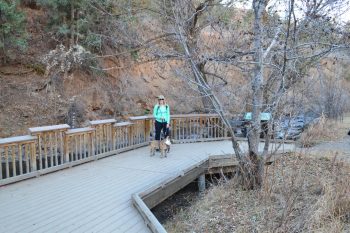
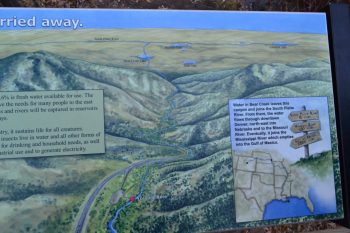
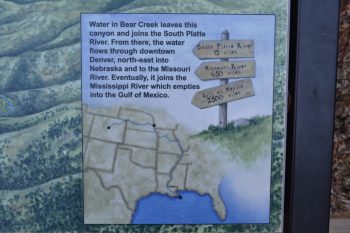
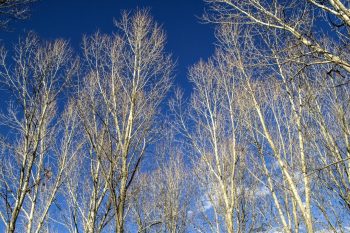
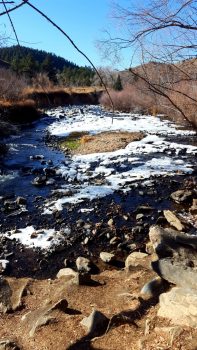
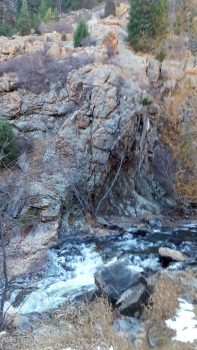

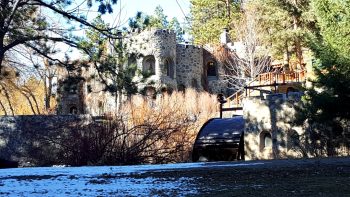
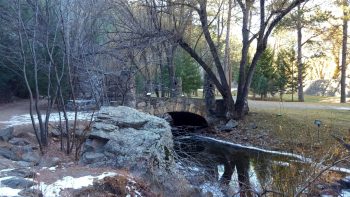
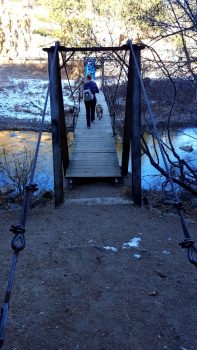
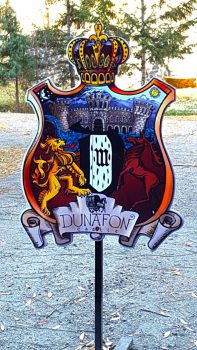
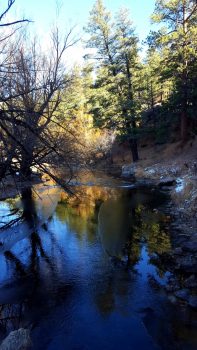
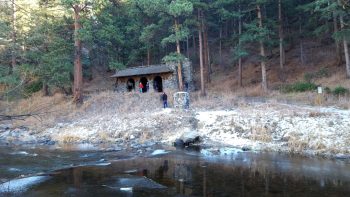
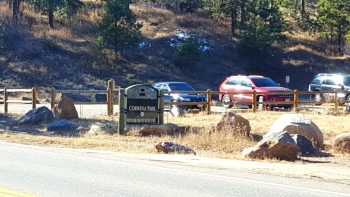
All things considered the park offers plenty of activities and diversions; from picnicking, to hiking, to mountain biking there is always something to do here. We’d recommend this for anyone wanting to get outside in a group with mixed abilities, as the trail is easy and almost anyone can do it. The options on distance are nice as well. Whether you want to take a long 12 mile hike or a short 1 mile jaunt along the creek, it’s all up to you. After your activity, we also recommend stopping in Morrison for some food and drinks. We particularly like the The Cow and they have a great happy hour. Cheers!
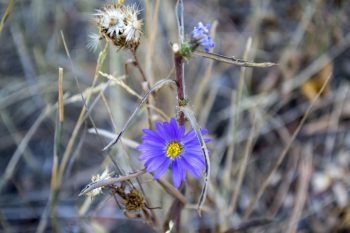
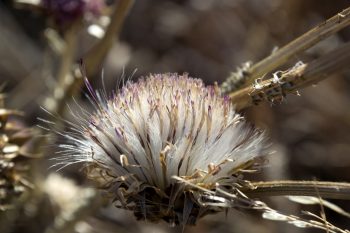
Bluebird Lake Rocky Mountain National Park
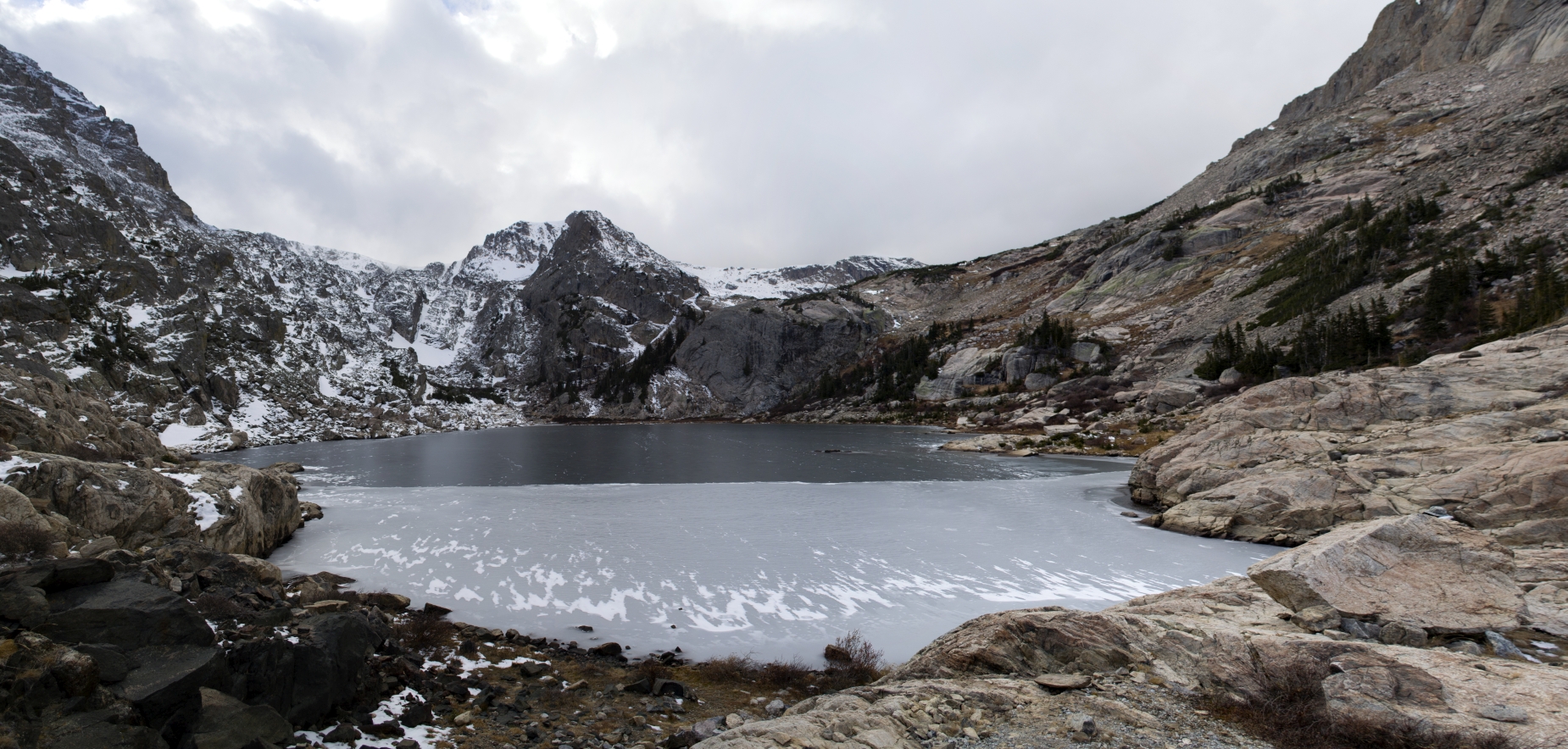
Distance: 12.44 miles (out and back) Elevation Gain: 2,974 ft. (net) Max. Elevation: 11,016 ft. Min. Elevation: 8,527 ft.
Date hiked: November 6, 2016
The cool evenings and brisk winds of fall brought us crunchy leaves beneath our feet and colors of brown and beige, but the snows we are so accustomed to this time of year in the high country are lacking and have left us unseasonably warm. Scant snowfall in many regions of the high country this year has extended summer/fall hiking conditions, and a trip to Rocky Mountain National Park was no exception. With no snow for our skis, we threw our hiking boots on once again and drove to Wild Basin, a gem in the vast expanse of the park. After a long, late morning drive, we arrived at the park. The entrance to the park and ranger station is approximately 20 miles from Lyons, CO on Hwy 7, and as a word of caution, there is very limited to zero cell service on this drive and throughout most of the hike. While this is a relatively nice opportunity to cleanse the soul from the distractions of politics, email, etc., it doesn’t help with worried family members waiting for a check in call. As we approached the entrance booth, there was no ranger on duty and a simple sign which read “please proceed.” We happily obliged and followed the summer narrow, dirt road all the way to the summer parking lot. On a typical summer weekend, there is absolutely no parking in this relatively small lot after 8:00 am, thus we were thrilled to have the opportunity to choose a space on this fall return trip. The hike to Bluebird lake follows the same path that leads to Copeland Falls, Calypso cascades, Ouzel Falls and Ouzel Lake that we visited on a few earlier trips. As you can imagine, there are several attractions to distract from the altitude gain along the way. Seen below are photos from the first few miles of our trip including Calypso Cascades, as well as information on ease and distance to each point of interest.
Calypso Cascade: 3.6 miles Round Trip (Easy)
Ouzel Falls: 5.2 miles Round Trip (Easy)
Ouzel Lake: 9.8 miles Round Trip (Intermediate due to distance)
Bluebird lake: 12.8 miles Round Trip (Intermediate due to distance)
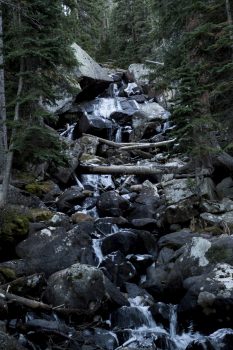
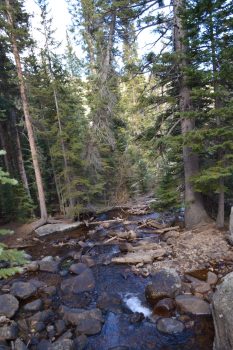
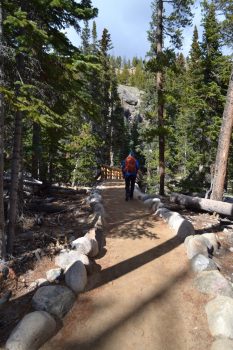
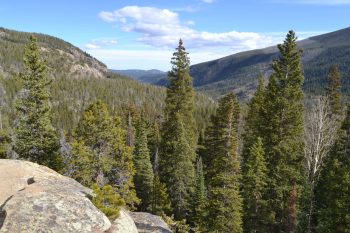
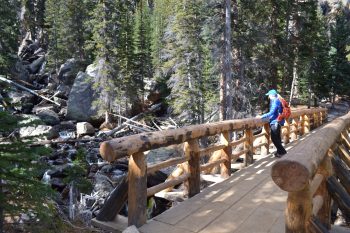
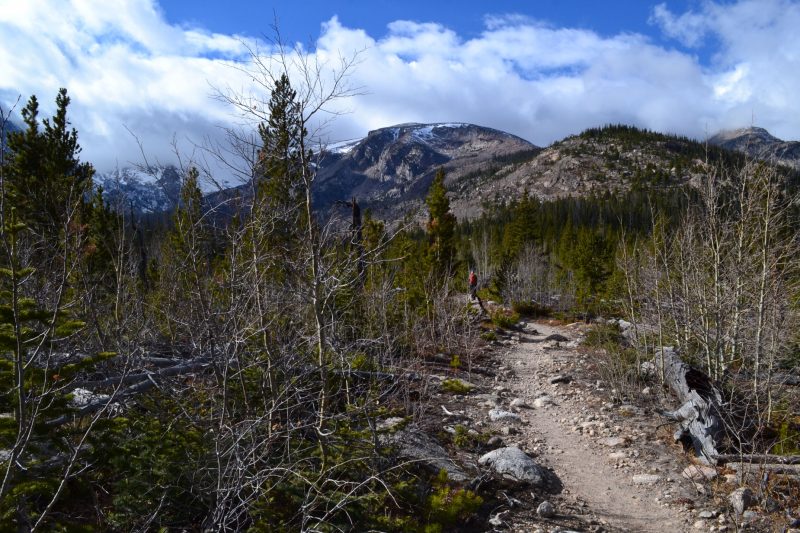
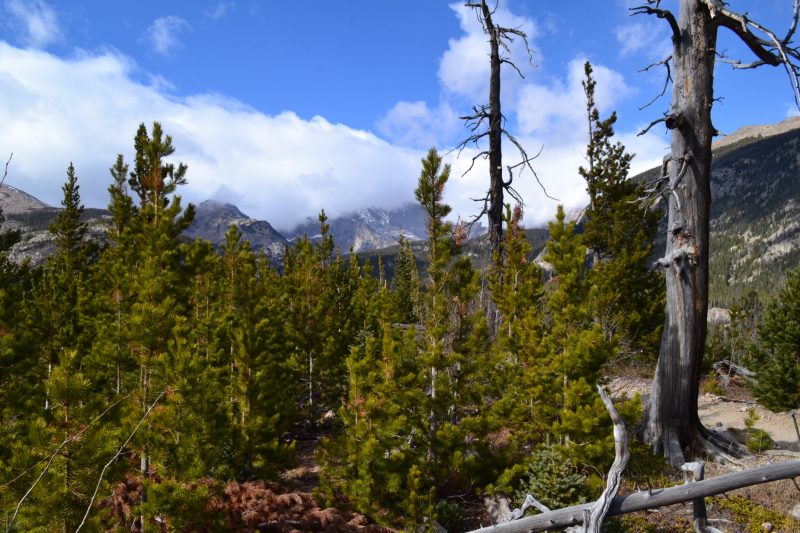
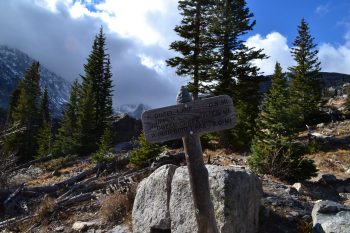

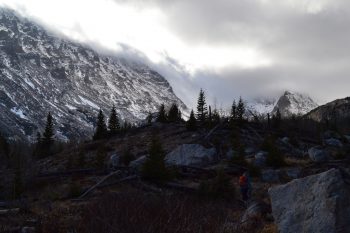
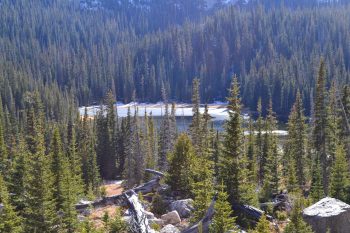
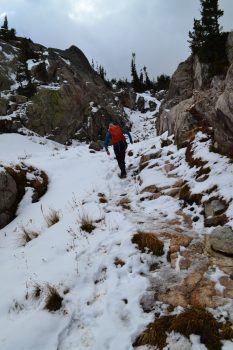

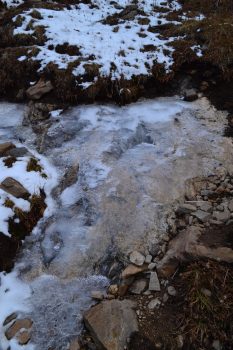
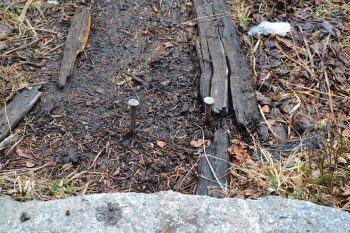

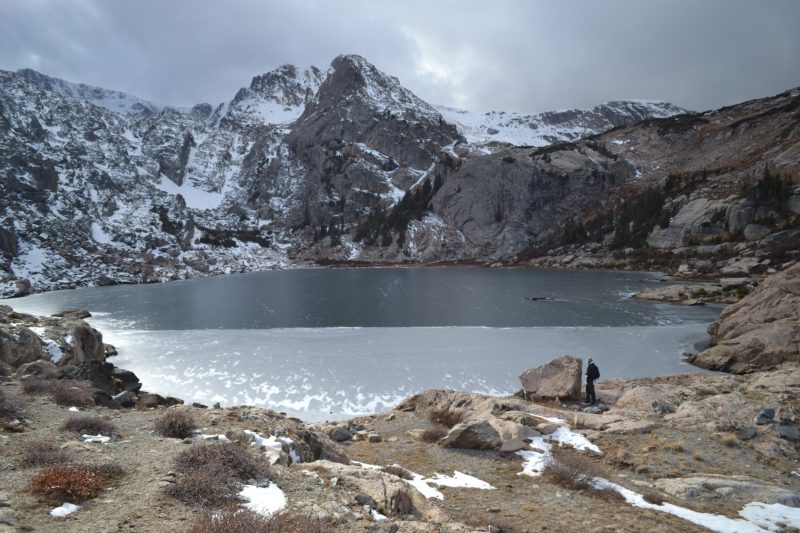

Mount Sniktau, Front Range, 13,234 ft
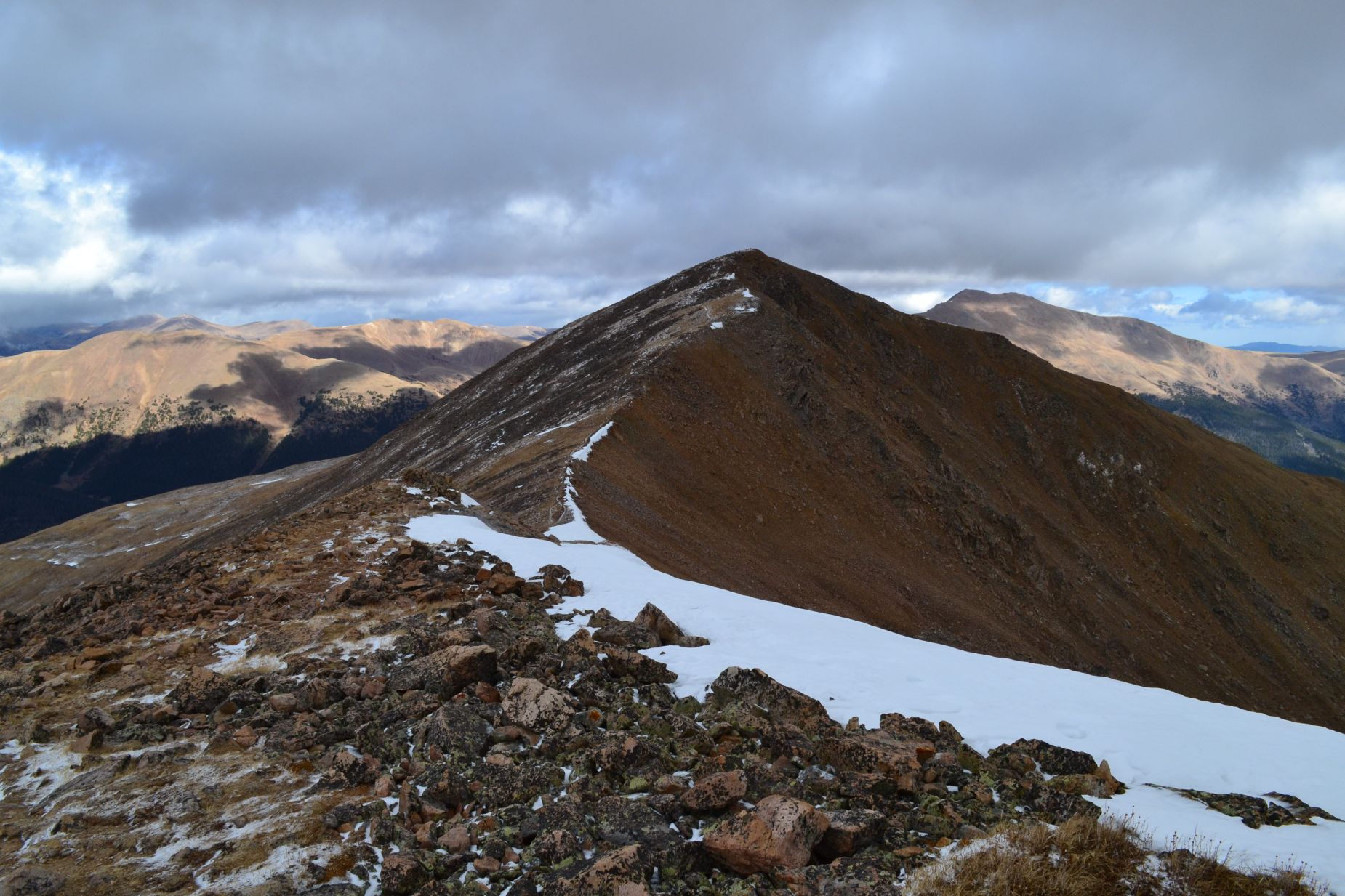
We’ve driven by this unassuming peak on numerous occasions on our way up I-70 towards other mountains and adventures. Most of the time, we fail to even notice Sniktau as we focus our attention on 14ers, Gray and Torreys or lately, at the smattering of early season snow at Loveland. Nonetheless, Mount Sniktau is a ranked peak that hovers above 13,000 feet. With little time for a longer trek, we opted to give this short 13er hike a try last Saturday, October 29th. We began our journey from the small parking lot at Loveland Pass at approximately 11,990 feet above sea level. The lack of earlier season snow and unseasonable warmer temperatures resulted in a mostly dry trail for the majority of our hike, though the temperatures were quite cool as expected for late October. We began the hike by walking up a short set of stone steps followed by a quarter to half mile of steep sandy trail. Though the hike is only 3.8 miles RT, there is a significant amount of elevation gain in the short trip to the summit. Seen below are photos of first portion of the hike. Notice, you can see the one ski run currently open at Arapahoe Basin.
Unfortunately for us, dark snow-filled clouds begin to quickly engulf our route as we reached the first set of rock wind shelters and brief flattening of terrain. Our timing for reaching these shelters was perfect, as gusts of strong wind and sleet/snow began to fall. We were essentially sitting among rocks in white-out conditions. Several parties 10 minutes behind us turned around. We decided to wait for 10-15 minutes to see if conditions improved so we could continue to the summit or at least avoid an uncomfortable hike back to the car. Our patience ended up greatly rewarding us as hints of blue and warmth from the sun emerged to greet us after a short wait. With visibility on our side once again, we continued onward and upward. Seen below is the view to south where Grizzly peak can be found and the first glimpses of the false summit after the storm cleared (photos top to bottom).
Though we could see our path, the winds were now relentless on the ridge walk. Gusts of near 50-60 mph frigidly blasted us as we pushed our lungs and legs up the moderately steep incline. Thankfully, there were not steep or sheer drop offs to fear on this easy summit attempt since we held a genuine fear of being blown over. As we reached the top of the false summit, we found the first hints of snow among the rocky outcroppings of the trail. It was not enough to require the effort of putting on microspikes, but brought us hope that we may begin to see some normal weather soon for this time of year. There was another wind shelter on the false summit that we sought refuge in from the wind once again. Though it was filled with wind blown snow, it provided a bit of relief. Below are photos from the false summit and the interesting weather patterns we witnessed while on the peak.
From the false summit, we made the decision to embrace the gnarly winds and brave the summit. It was only a short, steep jaunt away. We had to briefly descend into a saddle and then regain some of the elevation. Within 15 minutes, we were on the summit. We saw spectacular views of Grays and Torreys but unfortunately also of I-70 to our north. We spent an ever so short amount of time on the summit due to cold temperatures and winds but at least we had it to ourselves.
The hike to Mount Sniktau proved to be beautiful, short, and adventurous. Despite the lack of complete detachment from society that Mount Sniktau offered, it still provided a quick high altitude mountain fix. With the weather we encountered, it morphed from what could have been an uneventful hike, into an alpine enterprise that reminded us of why we pursue these treks as often as we can. Overall, we hiked about 3.8 miles and gained around 1,600 feet in elevation according to our GPS. If you have the time for a shorter, alpine hike to tag a 13er, Mount Sniktau isn’t a bad way to spend the day.
Two Rivers Lake, Lake Helene, Odessa Lake, and More

Miles: 8.0 (out-and-back) Max Elevation: 11,000 ft Min Elevation: 9,473 ft.
The weather was iffy this weekend, and we didn’t want to get ourselves stuck on a 14er during a thunderstorm; so we opted to head over to Rocky Mountain National Park (RMNP) and explore some lakes. The fact that we hadn’t been to RMNP in a while also motivated us to go exploring. After some discussion, we agreed we’d head out towards Lake Helene and have a look around.
The easiest route to Lake Helene is from the Bear Lake trailhead, which we know well, since it serves so many valleys, lakes, waterfalls, cirques, and mountains. From the Bear Lake trailhead you walk north around Bear Lake very briefly until you see a turn off to the right with a signpost for Flattop Mountain, Fern Lake, Odessa Lake, and Bierstadt Lake (seen below). You gain some elevation here in the first part of the trail, which is heavily wooded and beautiful. The beginning of the trail is filled with Aspens, and as you continue it becomes dominated by pines. The trail is a very nice, well kept path, which was a welcome change from some of the rough trails and bushwhacking we’ve been doing.
You come to a few junctions along this path, to get to Lake Helene, you keep following the signs for Odessa Lake and Fern Lake. You can veer off at any of these junctions and they will take you to Flattop Mountain or even to Lake Bierstadt. But the path is very well marked and the signs are good (seen below). As we continued we came to a few openings in the trees where we could see the gorgeous landscape below. Plenty of birds were out, as well as a multitude of ground squirrels, Albert’s squirrels, and some chipmunks. To add to the beauty, there were still flowers in bloom along the path. Eventually, we hit a rock field, which offered up a glimpse of Notchtop Mountain (the notch can be seen in the photo below).
As we made our way back into the forest, we came across the Sourdough campsite. Not very far past this sign is a spur that runs off to the left, which takes you to the Two Rivers lake. It could be easy to miss this turnoff, so we’ve included some pictures below to help. We had to bushwhack a little bit to get to the lake, but we did end up on the north bank and had a snack on some rocks. It is a gorgeous lake and we had it to ourselves.
After heading back to the main trail we continued for a very, very brief time until we came to multiple crossroads. The first fork in the road was a path that veered to the right and right up Joe Mills Mountain. We wanted to go up just a little bit to see the view, and we were glad we did. It was an amazing view of Notchtop Mountain and Flattop Mountain as well as the cirque below (see the image below). The second split was less obvious, and this is where you have to decide if you want to head to Lake Odessa or Lake Helene. The main trail obviously turns sharply to the right and descends, but there is a small path that continues straight towards Notchtop. If you want to see Lake Odessa, then take the main trail, but we wanted to see Lake Helene, and thus took the path less traveled.
As we continued on the path, we came to a small stream crossing. Just above the stream was Lake Helene. We reached it and explored briefly. There were some ducks quacking and it was very nice, but for some reason we were called towards the cirque above. As we headed onward toward the bowl, we ran into some nice people from Florida. The husband told us there was a nice view on a small game trail to the right, and so we explored and found a very nice little overlook. We stopped here to consider our next move. Now, if you stop here and return, we’d say this is an easy hike; but if you continue to the alpine lakes it becomes an intermediate hike.
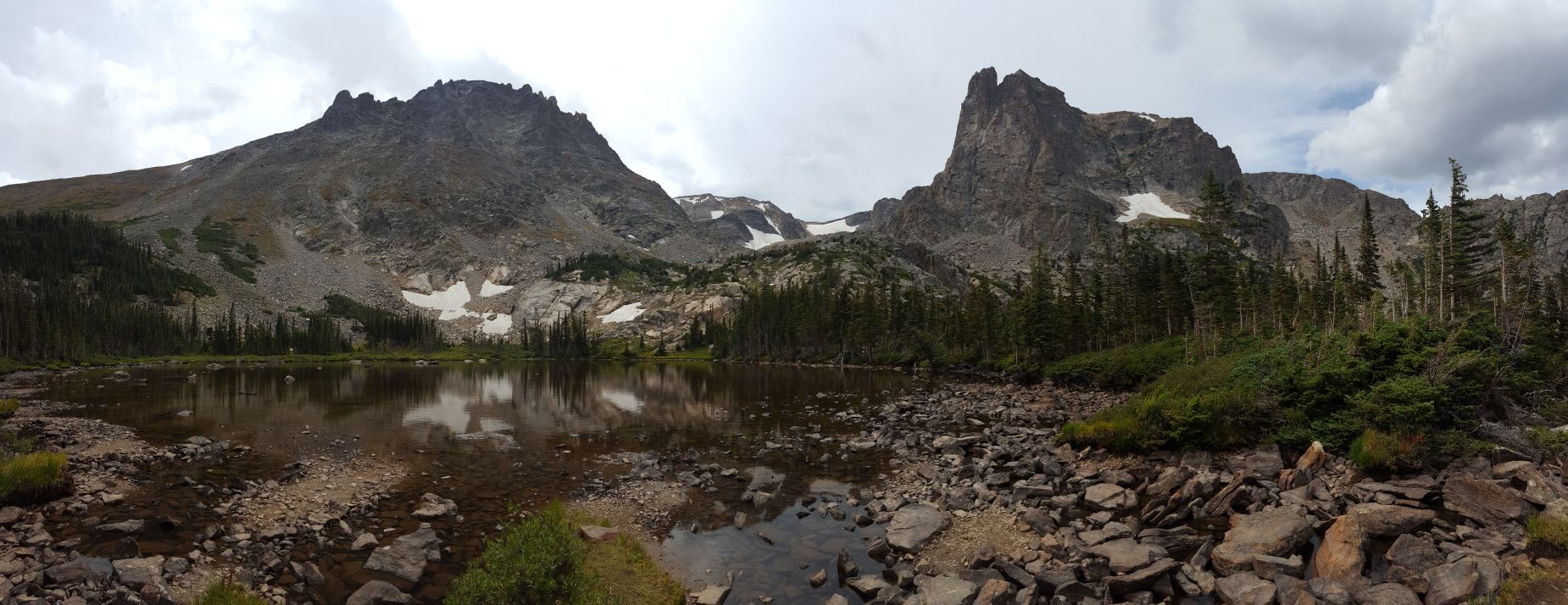
We had an inkling that there were some alpine lakes up in that cirque, and we wanted to get our dose of scrambling in for the day, so we began up a large rock band towards the bowl under Notchtop and Flattop. It was a lot of fun, and very quickly we were able to see all three lakes we were thinking about: Two Rivers, Helene, and Odessa (seen below). After a little bit of route finding and scrambling we found the first of our two unnamed alpine lakes (first lake picture below). We decided to look over the small ridge to see if there was another lake, and low-and-behold, there was. It was quite surreal standing in the cirque, and we heard some rockfall coming from the south in one of the gullies. We also heard some yells coming from Notchtop mountain, but couldn’t see anyone at first. Below are some pictures.

We spent a little time looking at the face of Notchtop and after some examination we found the climbers. The camera we had did not have a good zoom on it, so the quality is poor, but you can see two figures on the ledge working their way to the notch. Lisa Foster in her monumental work on Rocky Mountain Nation Park claims that the route up can be kept to a class 4; however, all detailed routes we’ve found so far are at least a class 5.7 with up to 5.10d variations. It was late in the day, and weather was rolling in, so we hope they got off safely. The mountain has peaked our curiosity, and we may go back and explore Notchtop later.
On the way back down, we took a different route by veering to the right and descending a small, friendly gully. It was pretty, and we had views of the lakes for much of the way down. At the base we found the Florida hikers again, who had hung out there for quite some time. We discovered they were feeling the altitude and trying to rest up and decide where to go next. This is just evidence that even at 10,000 ft. AMS can hit you. We talked to them for a little bit, they were very nice, and then headed on down. Once we were back on the main path, it was an easy hike out. Once we were close to Bear Lake and the Aspens started to reappear, we noticed that the leaves were beginning to change. Hopefully, we will get back up again the next few weekends and watch the colors of Autumn appear and light up the mountains. Below are some pictures from our return and a gallery below.

